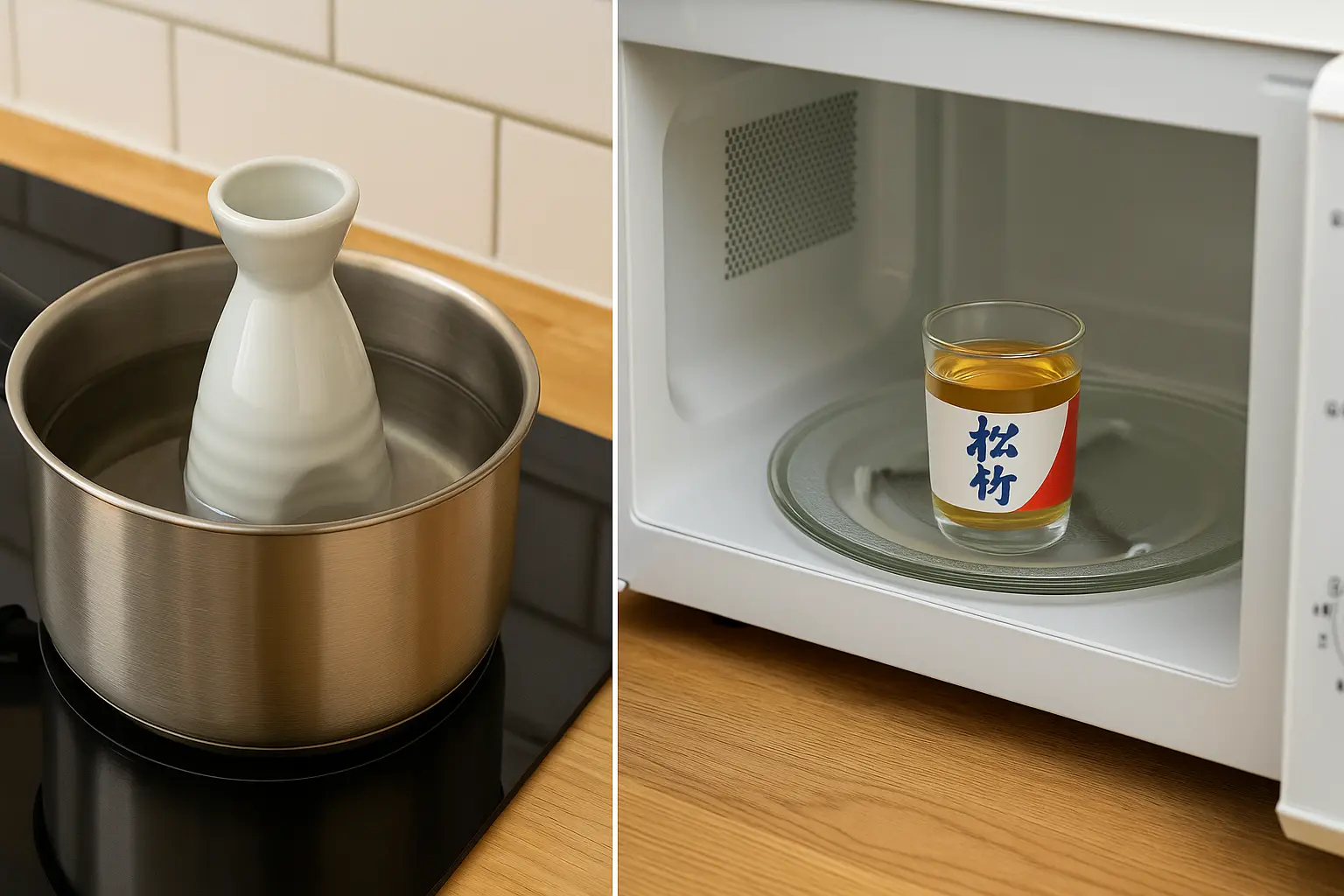
How to Drink Japanese Sake (Temperature and Vessels)
Same sake, but the taste changes so dramatically with temperature and vessel? Learn the deep enjoyment of Japanese sake in an easy-to-understand way for beginners.
How to Drink Japanese Sake (Temperature and Vessels)
“Wait, this sake tastes completely different from what I had the other day…?”
Actually, that might be due to differences in temperature or vessel.
Even the same brand can taste and smell completely different with just a slight change in temperature.
Change the vessel, and even the atmosphere changes.
How much do you know about sake’s “transformative” nature?
This article provides tips for enjoying Japanese sake more through three perspectives: temperature, vessels, and etiquette.
Does Temperature Really Change the Flavor?
Absolutely. Moreover, Japanese sake is a unique beverage that can be enjoyed across a wide temperature range from 5°C to 55°C, from chilled to hot.

Chilled (5-10°C): Cool and Clear Flavors
- Fruity and refreshing, like white wine
- Recommended for hot seasons or as an aperitif
- Daiginjo and nama-zake are especially good chilled
Room Temperature (Around 20°C): See the Sake’s True Character
- Exquisite balance of umami and acidity
- Relaxed enjoyment as a dining companion
- Junmai-shu and honjozo-shu pair well
Nurukan (40-45°C): Gentle and Enveloping
- Rounded flavors with softly rising aromas
- Perfect for autumn evenings or quiet drinking
- Aged sake and yamahai styles shine
Atsukan (50-55°C): Crisp Heat that Warms the Heart
- Sharp, clean finish, perfect for cold days
- Excellent compatibility with rich-flavored dishes
Change the Vessel, Change the Mood and Taste
When enjoying Japanese sake, vessels are not supporting players but starring roles.
They affect appearance, aroma, and mouthfeel—everything.
Traditional Japanese Vessels: Taste with “Stories”

- Ochoko: Elegant sipping cups. Perfect for toasts too
- Guinomi: Fits comfortably in hand. A sake lover’s companion
- Masu: Perfect for celebratory presentations with aroma and appearance
Modern Vessels: For Enjoying Aromas

- Wine glasses: Ginjo aromas spread beautifully
- Katakuchi + Guinomi: Beautiful pouring gestures. Great for conversation
The Art of Pouring

Experiencing the Culture of “Pouring for Each Other”
- Hold the tokkuri with both hands
- The recipient also receives with both hands as proper etiquette
- A light bow and “itadakimasu” (thank you for the meal)
It’s amazing how this single gesture makes sake taste even deeper.
New Perspectives Through Pairing

“Pairing with sashimi is the standard, right?”
…Of course that works, but sake’s depth lies in how it pairs with cheese, shiokara, even curry.
The key is matching the “intensity” of the dish with the sake’s “temperature range and style.”
For example:
- Fruity chilled sake × White fish carpaccio
- Hot sake × Beef tendon stew or miso dengaku
Tips for Temperature Control at Home

- For chilling: “Refrigerator or ice water”
- For warming: “Water bath or gentle microwave heating”
- For special occasions: Try a kandoko (sake warmer)
How to Choose Your First Cup?
For beginners, this sequence is recommended:
- Start with chilled junmai-shu
→ Gentle aroma and rounded flavors - Sip slowly from an ochoko
→ Also prevents overdrinking - Try pairing with light Japanese cuisine
→ White fish, cold tofu, tempura are recommended
As you get accustomed, experiment with temperatures, vessels, and breweries.
You’ll start to discover your “preferences” like “this temperature makes it mellow” or “this brewery’s sake has rich body.”
Finally: Sake is a Free Beverage
There’s no need to be bound by rules.
The way you find delicious is the most correct way to drink it.
Chilled or warmed. In an ochoko or wine glass.
If that cup makes your day a little richer, that’s perfect success.
For information about storage methods, visit here.